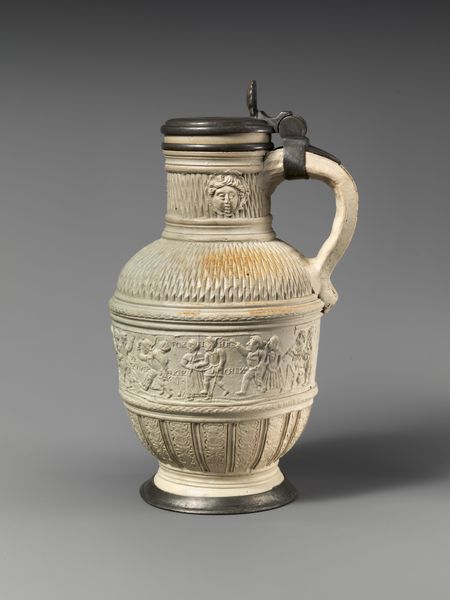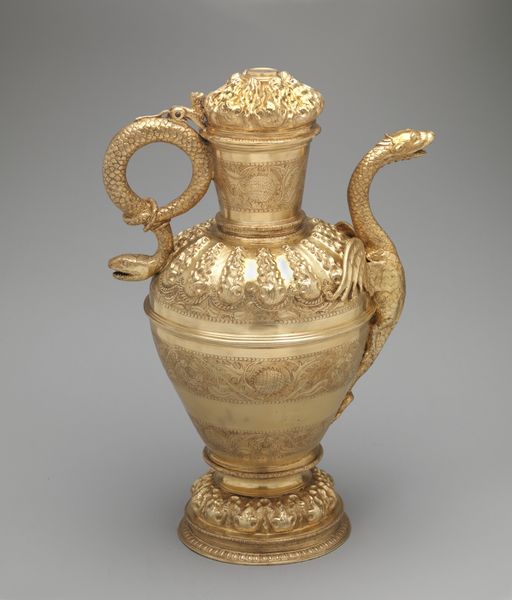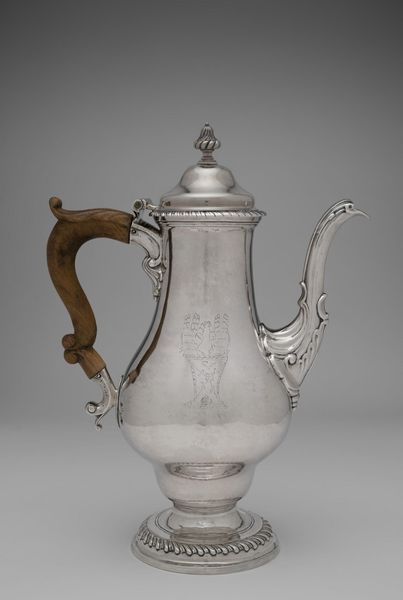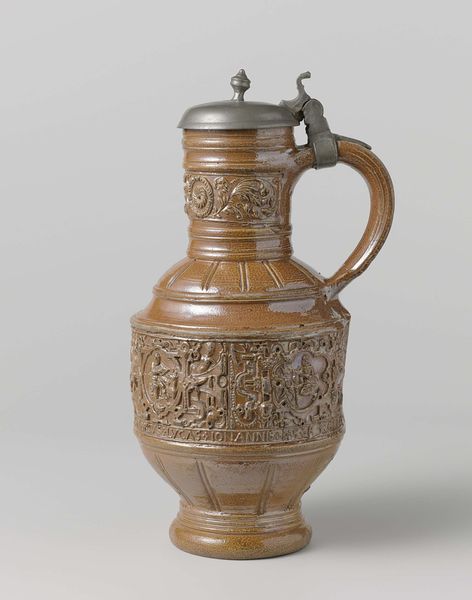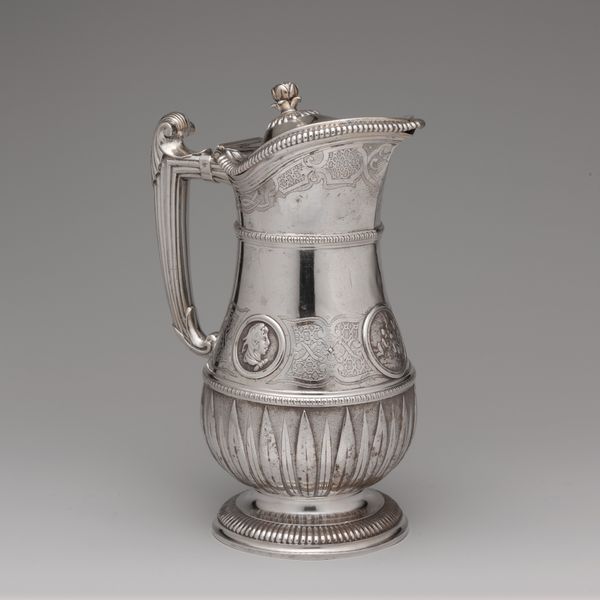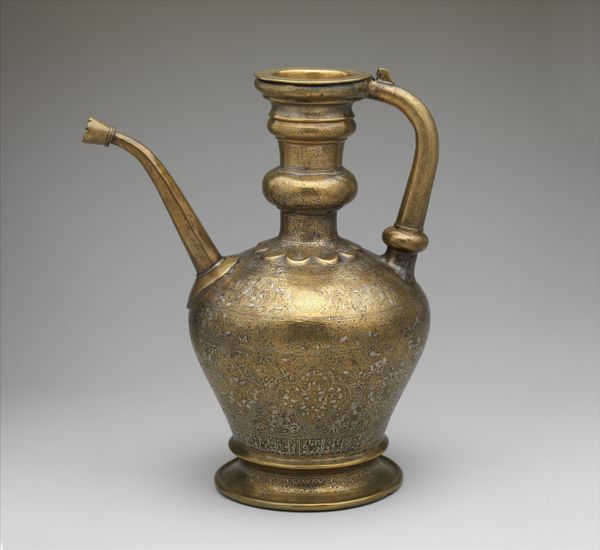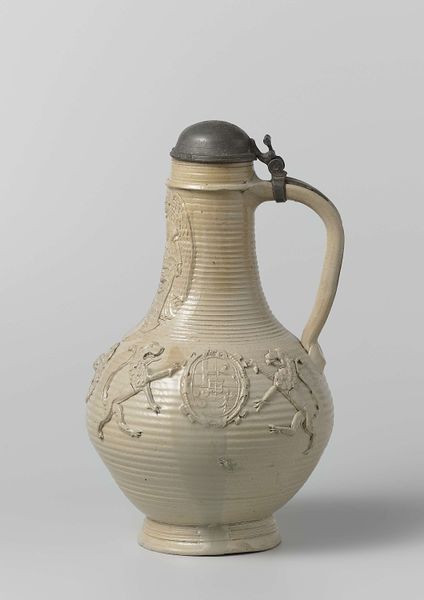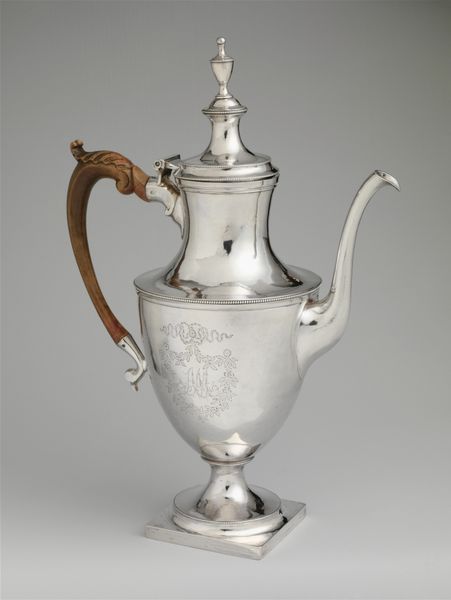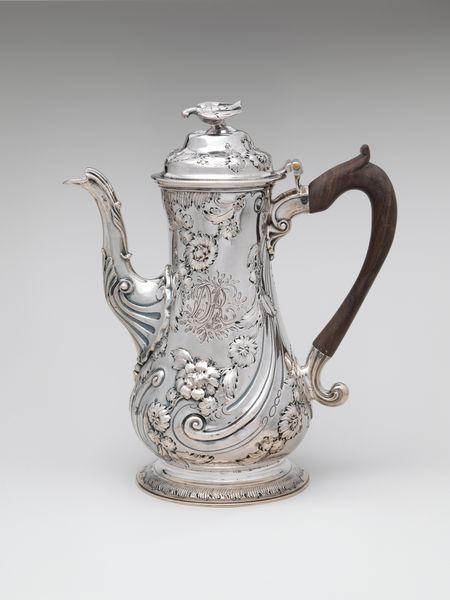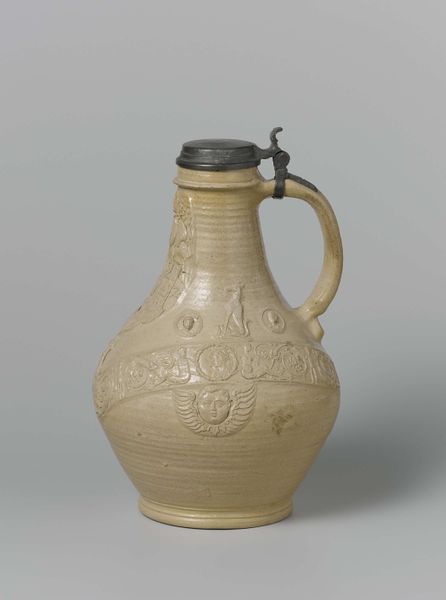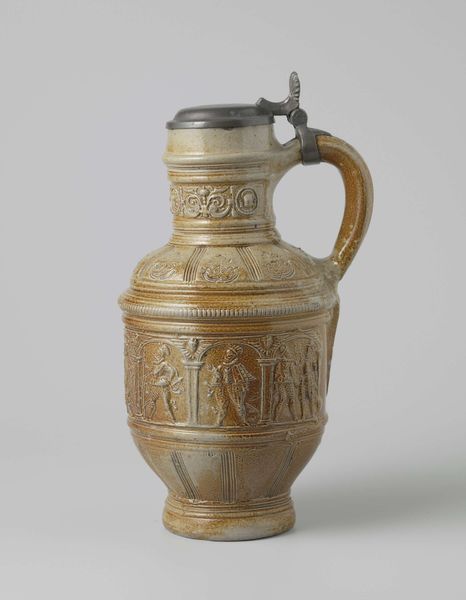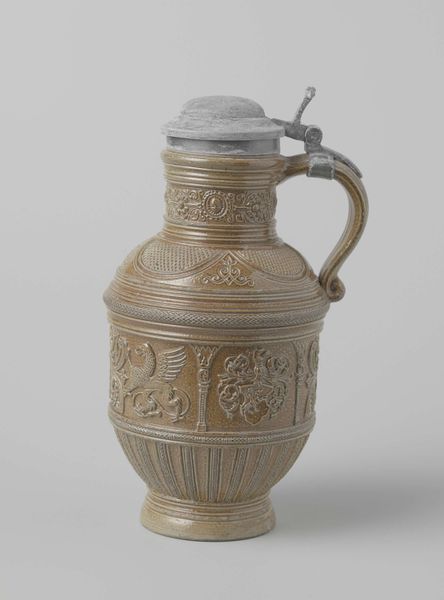
Dimensions: Height: 10 1/4 in. (26 cm)
Copyright: Public Domain
Curator: Good morning. We are standing before a rather imposing Ewer, sometimes called a Schnabelkanne. This remarkable piece dates to 1597. It was crafted by Christian Knütgen. Editor: My first thought? It’s incredibly ornate. All those carefully etched details in a single light tone! There’s a coolness and almost rigid elegance that gives it real presence, despite being…well, a fancy jug. Curator: Precisely. Knütgen worked primarily with stoneware. Observe how the body has been articulated with deep horizontal etching that lends a subtle rhythmic effect. Notice the sculptural figures and floral arabesques along the lower section. Editor: Right. It is that juxtaposition of textures and patterns—the stark lines versus the elaborate frieze—that really activates the surface. How would it have functioned in its time? Curator: Such ewers, often presented as gifts among the elite, carried symbolic weight beyond mere functionality. These were statements of wealth, power, and refined taste. Serving vessels evolved into coveted collectibles over centuries. Editor: Certainly, given the painstaking production. How the social function affects its visual form…the performative function is inherent in the design choices; every flourish aimed to communicate status. The artist uses the form of the object to transmit wealth to anyone who beholds it. Curator: Absolutely. Knütgen wasn't merely forming a container but producing a cultural signifier laden with socio-political implications. One can easily discern Renaissance stylistic trends in its elaborate composition, a signifier of status at the time. Editor: It really bridges craft and social history so well. The material limitations—the ceramic medium itself—paired with this extravagant ambition of communicating luxury and influence; a dynamic play indeed. Curator: In a word, yes! I find, too, that close looking reveals Knütgen’s understanding of both material and social demands on craftsmanship; and I find such sensitivity endlessly impressive. Editor: For me, this close-up reinforces the notion that these pieces transcend their original, utilitarian context, prompting us to rethink how art intertwines function and meaning even today.
Comments
No comments
Be the first to comment and join the conversation on the ultimate creative platform.
